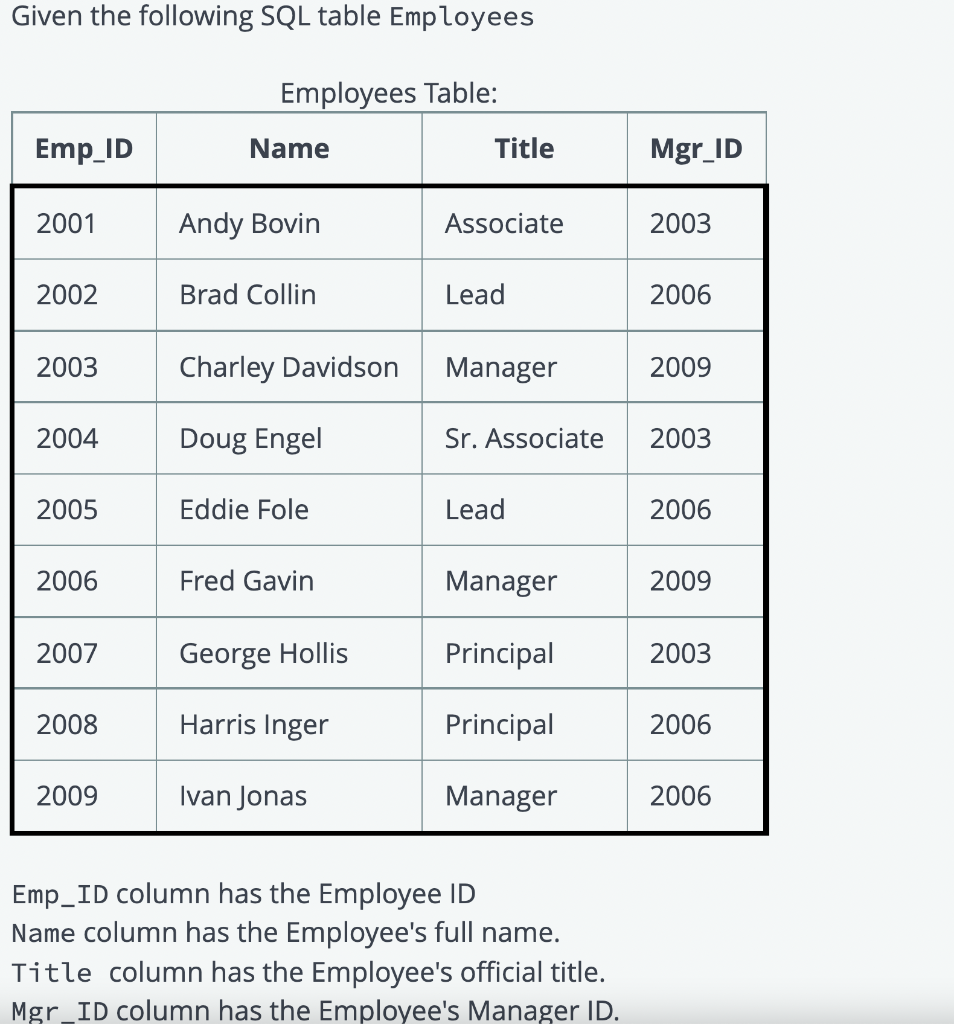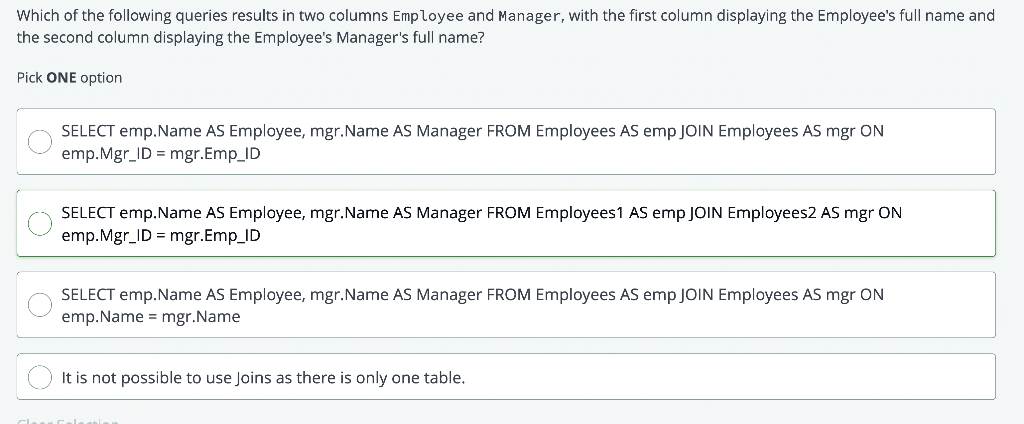Home /
Expert Answers /
Computer Science /
given-the-following-sql-table-employees-emp-id-column-has-the-employee-id-name-column-has-the-empl-pa370
(Solved): Given the following SQL table Employees Emp_ID column has the Employee ID Name column has the Empl ...
Given the following SQL table Employees Emp_ID column has the Employee ID Name column has the Employee's full name. Title column has the Employee's official title. Mgr_ID column has the Employee's Manager ID.
Which of the following queries results in two columns Employee and Manager, with the first column displaying the Employee's full name and the second column displaying the Employee's Manager's full name? Pick ONE option SELECT emp.Name AS Employee, mgr.Name AS Manager FROM Employees AS emp JOIN Employees AS mgr ON emp.Mgr_ID = mgr.Emp_ID SELECT emp.Name AS Employee, mgr.Name AS Manager FROM Employees1 AS emp JOIN Employees2 AS mgr ON emp.Mgr_ID = mgr.Emp_ID SELECT emp.Name AS Employee, mgr.Name AS Manager FROM Employees AS emp JOIN Employees AS mgr ON emp. Name \( =\mathrm{mgr} . \mathrm{Name} \) It is not possible to use Joins as there is only one table.
Expert Answer
Option 1 is the correct answer Rows from two or more tables are combined using a SQL JOIN clause. In a temporary

